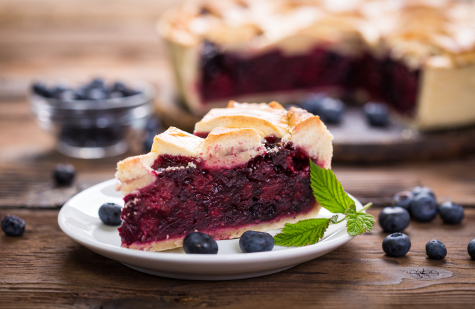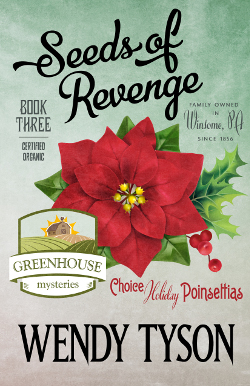
I started my first garden at age 10. Notice I didn’t say I planted my first garden because that would imply completion. Rather, fueled by images of the farms in James Herriot novels and my father’s joy when buying ripe Jersey tomatoes, I dug a big hole in the backyard. “What’s that for?” my father asked. He was a patient man. “My garden,” I told him. He probably rolled his eyes—I don’t remember. The thing is, digging a garden was tough work, and eventually, summer games of freeze tag and Kick the Can won out over hard labor. My father probably filled the hole back in; I don’t remember that, either.
What I do remember is that my obsession with farm life continued.
At 11, when other girls were asking for roller skates and bicycles with banana seats and pink baskets, I wanted horseback-riding lessons. At 13, I had my first real job: I worked at a horse farm in exchange for the opportunity to ride the horses. By 16, I was working for a veterinarian, and I did part-time duty at the vet technician’s farm. My first major in college? Animal Bioscience.
Somewhere along the line, my focus on “big agriculture” shifted, and I started to rethink what it meant to farm. This was probably the influence of my husband’s grandparents, who were homesteaders and subsistence farmers before it became trendy. They grew their own vegetables, raised what we would call grass-fed animals, and foraged for mushrooms and berries.
By the time my husband and I met in college, his grandparents were older and had already downsized their farm. Nevertheless, they still grew or raised almost everything they ate—and nothing went to waste. I remember being in my husband’s grandmother’s kitchen on a day she went blueberry picking. She was in her 70s, yet she’d hiked around the Pocono Mountains where they lived and picked gallons of wild berries. She sorted them and then froze the berries in cardboard milk cartons she’d saved and cleaned. She placed wax paper and a rubber band over the top of each full carton and froze her bounty. That night, she made blueberry pie. I’d never tasted anything like it.

Their way of life seemed quaint but foreign. It never really occurred to me that we could do it too—not on our third of an acre property outside of Philadelphia. After all, we had a Whole Foods and a Trader Joe’s within a few miles of our house. And what would the neighbors think?
Then, my young twin sons experienced serious upper respiratory issues. We did our research and committed to feeding them more fruits and vegetables—almost exclusively organic—as part of a plan to boost their immune systems. The plan was working, but suddenly the market tanked, and my husband’s job was at risk. Organic meant expensive, and with the possibility of losing 50% of our household income looming, we couldn’t afford it.
Inspired by my in-laws and the kitchen gardens we’d seen on our travels through Eastern Europe and Mexico, we decided to grow our own produce. By our third or fourth season, we could feed our family (and most of the neighborhood) on a relatively tiny plot of land and a tinier budget. We were hooked.
A few years later, we started our own small vegetable farm with the intention of developing it into an organic CSA (community supported agriculture). Unfortunately, things fell through with the land we were leasing, and the farm never made it past its first season.
During a book signing in a small town in North Carolina shortly thereafter, I was moved by the interactions I witnessed between the shop owners, their children, and the townspeople. I realized a version of our organic farm could live on in a fictional small town. The Greenhouse Mystery series was born.

I hear from Greenhouse readers regularly. They tell me that they want to see more of Megan working on the farm, more about the produce and the food. They say the books remind them of their experiences hanging out in the family kitchen or working alongside their grandparents in the garden. They like the farming details. They like the setting.
Check out a wonderful Q&A with author Wendy Tyson!
Could it be that people long for simpler times—or perhaps simpler lives?
The reality is that people today are not as connected to their food sources. Grassroots efforts, farm-to-table restaurants, farmers' markets, and social media have helped make headway, but it’s a constant battle against the advertising money spent by big corporations.
Where once, real food was a given, today it’s special. Products tout things like “all natural,” “100% juice,” “real cheese,” etc. It’s easy to find fast food, but simple, slow food? Not so much. The first time people have a baked Yukon Gold potato that was picked right from the garden, they’re amazed at how buttery and delicious it is. Without butter. Without salt. Collectively, we’ve forgotten what it feels like to nourish ourselves with real food. To slow down and smell the blueberry pie.
The small organic farm paints an image, one many of us relate to. We see an array of brightly colored vegetables grown without chemicals. Food cooked in a kitchen that’s filled not only with the incredible scents of baked goods and simmering whole foods but with conversation and teamwork. It’s a fantasy, perhaps, but not one that’s wholly unrealistic. Like me with my first garden, we’re seduced by the idea, but the reality seemed out of reach.
Enter the cozy farm mystery.
Cozy mysteries specialize at world-building. Of course, you need well-drawn characters and a compelling plot, but readers want to be drawn into the setting. They want to be part of the characters’ world, even if only for a short time. There’s a sense of safety and warmth and community in a farm-based mystery. We’re allowed to leave the hectic pace and consumerism of the real world behind for just a little while. We’re allowed to return to our grandparents’ kitchens.
There’s a built-in paradox in pairing food with murder—which is why it works. And if there are intrigue and suspense? Even better.
Read John Valeri's review of Wendy Tyson's latest Greenhouse Mystery, Seeds of Revenge!
To learn more or order a copy, visit:
Wendy Tyson’s background in law and psychology has provided inspiration for her mysteries and thrillers. Originally from the Philadelphia area, Wendy has returned to her roots and lives there again on a micro-farm with her husband, three sons, and three dogs. Wendy’s short fiction has appeared in literary journals, and she’s a contributing editor and columnist for The Big Thrill and The Thrill Begins, International Thriller Writers’ online magazines. Wendy is the author of the Allison Campbell Mystery series and the Greenhouse Mystery series.

I love this, Wendy. Thank you for sharing. It is sad how disconnected we are from our food sources (and I’m as guilty as anyone). When I hear about “modern” practices with regard to the abundance of pesticides, factory farms, and the like, it’s really appalling. I do my best to eat organic and I haven’t eaten meat in 28 years, but unless you’re involved with the actual growing of your food (I am not) it is easy to take the work for granted.
I seem to gravitate to anything that has to do with farming, farmers, and farm animals no matter the genre.